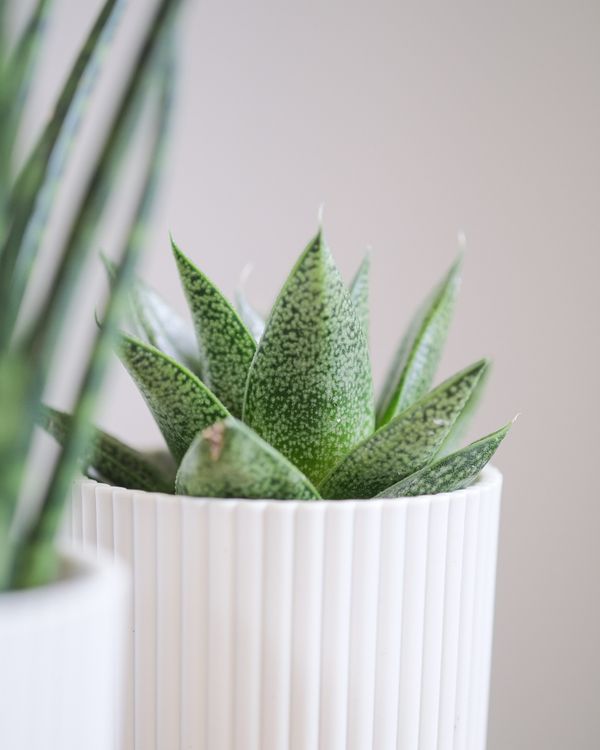Gasteria Care Guide
How to grow and care for Gasteria (Gasteria spp.)
Gasteria spp., commonly known as Gasteria, are a genus of succulent plants native to South Africa. Renowned for their striking, fleshy leaves which often have intriguing patterns, Gasteria make excellent indoor plants due to their hardiness and ability to thrive in low-light conditions. These compact succulents are perfect for those looking to add a touch of the exotic to their home environments.

Disclosure: This content includes affiliate links, which means we may earn a commission if you click on a link and make a purchase. As an Amazon Associate, we earn from qualifying purchases. This comes at no extra cost to you and helps offset the cost of running Leafwise. Please read our disclaimer for more info.
Table of Contents
Care
Gasteria plants are relatively easy to care for, making them a perfect choice for both beginner and experienced plant enthusiasts.
Light
Gasterias prefer bright, indirect light but thrive best with consistent exposure to filtered sunlight. While they can tolerate low-light conditions, prolonged low light may lead to etiolation (stretching) and faded leaf color. A south- or east-facing window with filtered light is ideal. Avoid direct sunlight, as it can cause leaf burn.
Watering
Water Gasteria generously during the spring and summer, letting the soil dry completely between waterings. Reduce watering significantly in fall and winter, limiting it to once every other month to prevent root rot.
Soil
Use a gritty, well-draining soil mix. A recommended mix includes one part loam, one part grit, and one part horticultural sand to provide optimal drainage and aeration. A pot with drainage holes is essential to prevent water from accumulating at the roots.
Temperature and Humidity
Gasteria plants thrive in temperatures between 60-75°F (15-24°C) but can tolerate high summer temperatures if provided with adequate ventilation. In winter, keep them at a minimum of 45°F (7°C), though they can briefly endure temperatures as low as 41°F (5°C). These plants do not require high humidity and can adapt well to typical indoor conditions.
Fertilization
Limit fertilization to once in the spring for both indoor and outdoor plants. Over-fertilization can lead to excessive, weak growth.
Maintenance
Pruning
Remove any dead or damaged leaves as needed to promote healthy new growth. Use sterilized scissors or pruning shears to prevent disease transmission.
Repotting
Gasterias grow slowly and typically need repotting every 2-3 years. Choose a pot that is only slightly larger than the current one to prevent excess soil moisture retention. Refresh the soil during repotting to maintain healthy growth.
Propagation
Gasteria plants are easy to propagate through offsets or leaf cuttings.
Offsets
Offsets (also called "pups") naturally form around the base of the parent plant and are the most reliable propagation method. Leaf cuttings can sometimes work, but they are less dependable for propagating Gasteria. To propagate:
- Gently remove the offset using clean hands or a sterilized knife.
- Allow the offset to dry for a day or two to prevent rot.
- Plant it in dry, well-draining soil and avoid watering for a few days.
- Resume regular care once roots establish.
Leaf Cuttings
- Select a healthy, mature leaf and cut it cleanly from the plant.
- Allow the leaf to callous over for several days.
- Place the leaf on moist succulent soil, ensuring the cut end is in contact with the surface.
- Mist lightly and keep in bright, indirect light until roots form.
Common Issues
Pests
Mealybugs and scale are common pests for Gasteria plants.
- Symptoms: White cotton-like spots (mealybugs) or brown, shell-like bumps (scale) on leaves.
- Solution: Remove pests using a cotton swab dipped in rubbing alcohol or apply insecticidal soap as needed.
Root Rot
Excess moisture is the leading cause of root rot.
- Symptoms: Mushy, discolored roots and wilting leaves.
- Solution: Ensure proper drainage, allow the soil to dry between waterings, and repot if needed.
Yellowing Leaves
Yellowing leaves can result from overwatering or inadequate lighting.
- Solution: Adjust watering habits, ensure proper soil drainage, and move the plant to a brighter location if necessary.
By following these care tips, your Gasteria plant will remain a stunning and low-maintenance addition to your indoor garden for years to come.
